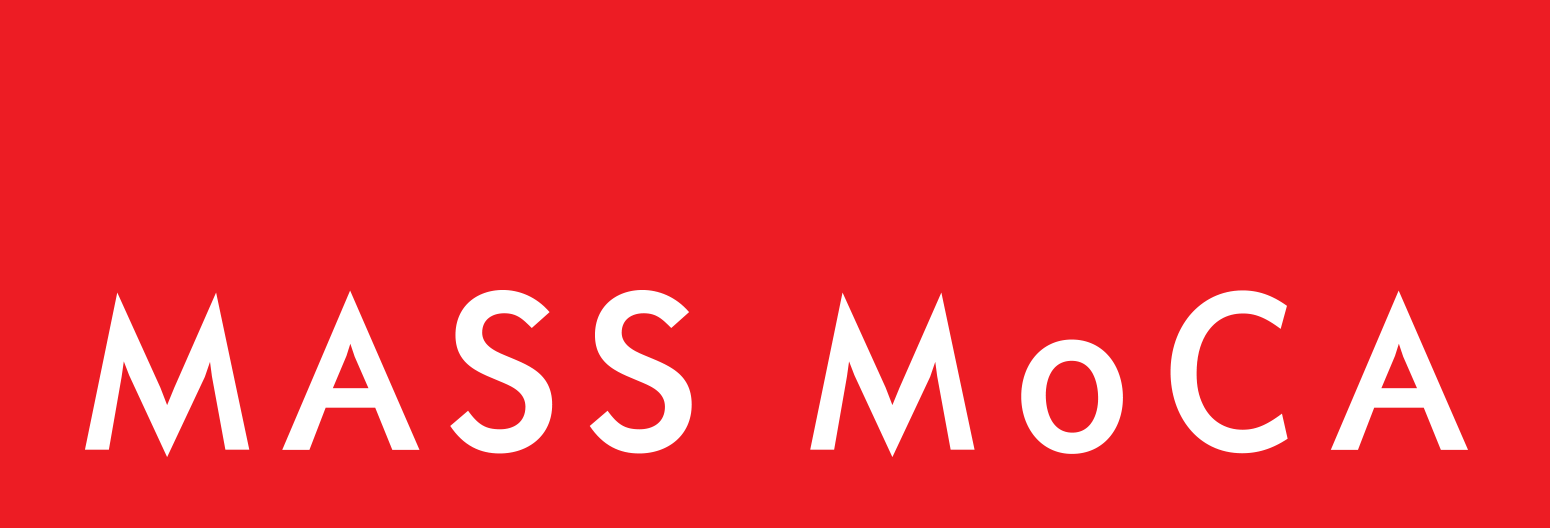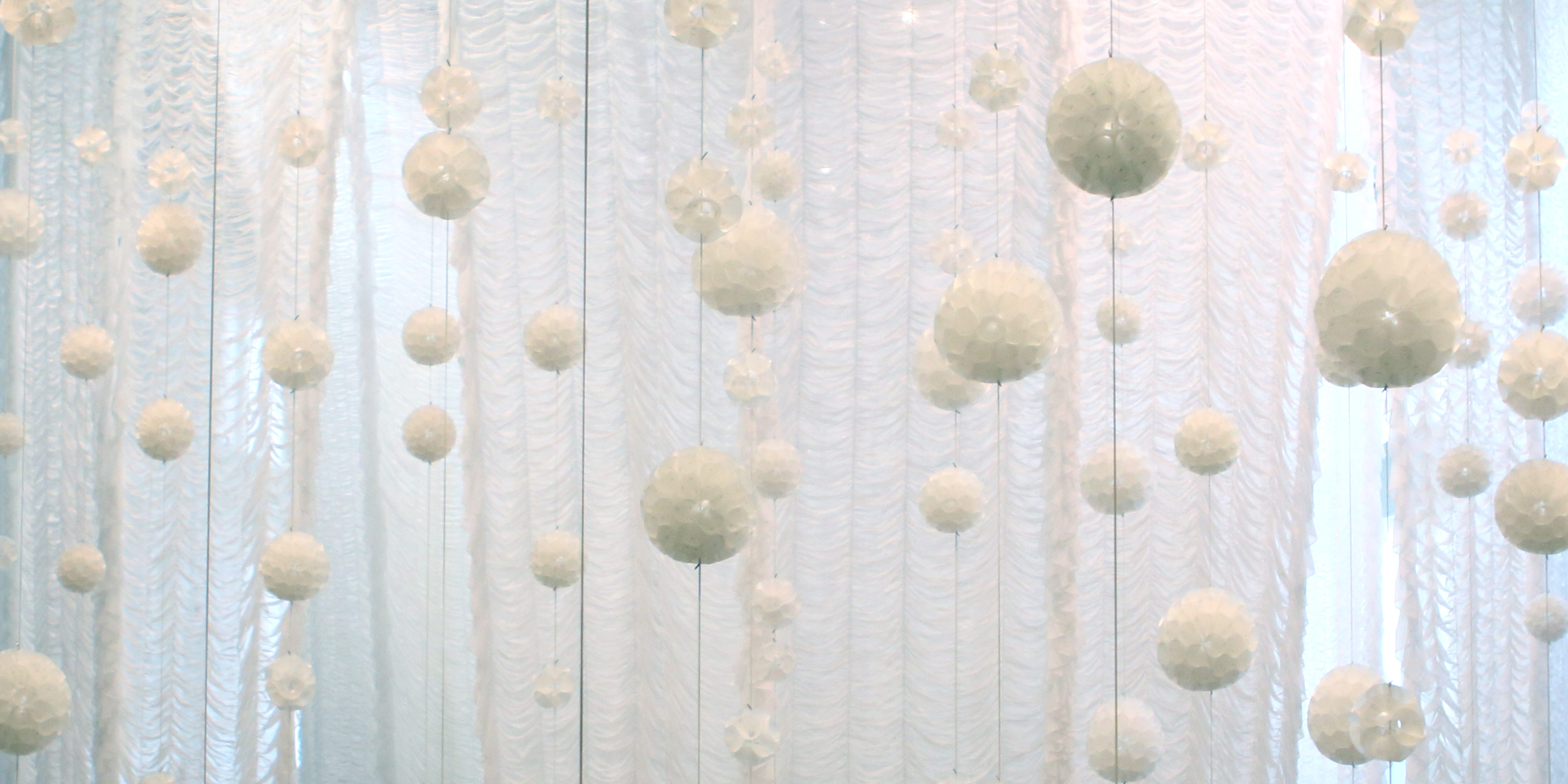 Exhibition
Exhibition- October 11, 2014 - May 25, 2015
- Building 5
Lee Boroson’s work begins with ideas of nature, which he mediates between the landscape as culture as opposed to notions of the outdoors as “wild” or “untamed.” To achieve this goal, Boroson creates large-scale immersive installations using inflatables, fabric, and light to create phenomenological experiences for his viewers, based on the elemental forces in nature, from air, fog, and smoke, to fire and the cosmos. Boroson’s installations are embodied and ephemeral within the space of the museum.
For MASS MoCA’s signature Building 5 Gallery, Boroson created an ambitious new installation consisting of four components: Moisture Content, Deep Current, Uplift, and Subterranean Set. After moving through them sequentially, viewers reached the mezzanine, a vantage sections of the landscape resolve as a single image.
Setting the stage for the exhibition, Moisture Content wipes away structural landmarks to leave behind a sense of negative space, priming viewers for the rest of the show. Multi-layered and intricate, Moisture Content consists of sheer fabric draperies and transparent and translucent crystalline forms made of sheet plastic arranged to create passageways. Like moving through shifting fog, viewers will stumble upon the occasional clear view through the haze and then lose it to obscuring layers of vinyl, partially opaque yet still penetrated by light, which consistently alter one’s perception and sense of scale of the space.
After navigating Moisture Content, viewers enter Deep Current, a referential ode to Niagara Falls, the title of which serves as a subtle pun on the word “current,” referencing both water and electricity. What fascinates Boroson is the fact that Niagara Falls is considered a sublime example of nature’s grandeur despite it being a highly engineered and carefully controlled version of nature. The machine itself is visible—ductwork, motors, and wooden structures creating a Rube Goldberg-esque interpretation of the most unnatural of all waterfalls, complete with theatrical National Park-style railings and decking, so visitors can get up close to the view.
Just past Deep Current, visitors enter the two mezzanine galleries, which present the earth and fire components of the exhibition. On the ground floor, Uplift comprises an array of inflatable fabric forms molded into stalactites to evoke the architecture of the underworld, providing room for contemplation in a dark, primordial chamber. Directly above, Subterranean Set is a “field” of hand-blown glass shapes containing lava-like fluids that recall the iconic imagery of “lava lamps” (though here, not lit from below). The organic glass shapes are presented on a series of low interlocking pedestals, which reference created nature, with green carpet tops referencing grass and faux wood grain sides.
Lee Boroson lives and works in Brooklyn, NY. Recent exhibitions include Lunar Bower at the Phillips Collection, Washington, DC, and States of Matter at the Esther Massry Gallery, The College at St. Rose, Albany, NY. Solo exhibition include The France Young Tang Teaching Museum and Art Gallery, Skidmore College, Saratoga Springs, NY; Artspace, New Haven, CT; Hallwalls Contemporary Art Center, Buffalo, NY; Bemis Center for Contemporary Art, Omaha, NE, and the Whitney Museum at Phillip Morris, New York. Boroson has received numerous awards including grants from the Pollock-Krasner Foundation and the New York Foundation for the Arts, and professional development grants from the Rhode Island School of Design. He received a MFA from Indiana University and a BFA from the State University of New York, New Paltz, and attended the Skowhegan School of Painting and Sculpture. Boroson currently teaches at the Rhode Island School of Design.
This exhibition is supported by the National Endowment for the Arts. Additional funding is provided by the Horace W. Goldsmith Foundation, the Massachusetts Cultural Council, and the Rhode Island School of Design Professional Development Fund. Special thanks to Magma Tower, Niels Cosman, and Angus Powers and the students of Alfred University Glass Department.
Lee Boroson, Moisture Content (detail), 2014
Fabric, acrylic, mylar, Lexan, aluminum, webbing, cord
![]()



